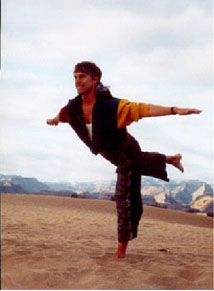Other aspects: Dance and aesthetic education are often considered as a superfluous luxury of middle class and hobby of the culture avant-garde. Using them for an education of tolerance for underprivileged people is admittedly bold, and such suggestions are often dismissed as being too extravagant. Applied as part of a psychological/philosophical concept in an Aesthetic education however they target to the centre of separation and exclusion, the attitude. Poverty and underdevelopment in this view not only represent economic problems but also significant deficits in culture and civilisation. Poorer countries as well as difficult neighbourhoods often don't participate in the cultural and emancipator mainstream of world culture but suffer from exclusion and violence. Variety in this case is not experienced as challenge but thread. We feel that dealing with this situation will be of crucial importance for the future of the open society. We need as well for the inside situation of societies as on the European level a concept and a philosophy, which allows a sensation of the connecting in people. Improvisation in Aesthetic education doesn't mean a mere individual expression but recurs to common archetypal conditions as body perception and basic expression-patterns. A good body perception/awareness and creativity perhaps represent the most important condition for a peace- and respectful way to deal with oneself and others.
|
|
 |
|
Dance can express symbolically the feeling of men and can do it in a way, that other people understand it (from where ever they might be) thus breaking down the walls of separation, which is the fundament of exclusion. If we can initialise skilled self optimising groups in various countries, we could overcome this habit of speculating, suppressing, being polemical, or frightened and dare to conduct the practical research with unconventional methods into the underlying problems of racism and ethnic conflicts examining difficulty with positive curiosity.